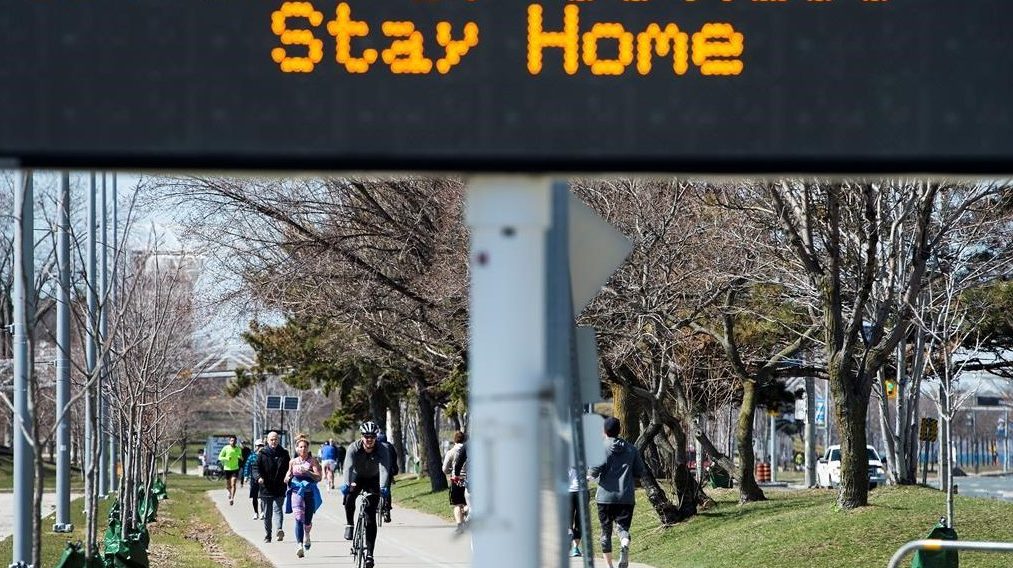The top doctors of three COVID-19 hot spots in Ontario are urging the province to impose tougher restrictions, including a stay-at-home order, to address a surge in new infections.
The chief medical officers of health for Toronto, Peel Region and Ottawa made the recommendations in a letter to Dr. David Williams, the province’s top doctor.
“A stay-at-home order issued by the province through an Emergency Order is necessary to prevent and mitigate large scale morbidity and mortality and irreparable strain on the health-care system,” said the letter signed by Dr. Eileen da Villa, Dr. Lawrence Loh and Dr. Vera Etches.
The letter comes just days after Premier Doug Ford’s government imposed a provincewide month-long shutdown that critics argue does not go far enough to address more transmissible variants of concern.
The three doctors also appealed to Williams to move schools to online learning in regions with significant COVID-19 outbreaks, remove businesses from the list of essential services, and implement 50 per cent staffing limits for those businesses deemed essential.
They also asked the government to impose travel restrictions between regions within Ontario and for the province to provide paid sick days to supplement the federal program.
The Ontario Medical Association also joined the calls for stricter measures and a stay-at-home order to address the increase in COVID-19 cases.
“The consequences of not doing so could include more people sick and dying than we have experienced thus far; so many so, that doctors could no longer care for everyone,” said Dr. Samantha Hill, the group’s president.

A spokeswoman for Health Minister Christine Elliott said the shutdown was aimed at dealing with the third wave of the pandemic, but noted it takes time for the intended effects of the measures to be realized due to the incubation period of the virus.
But some public health leaders appeared to have lost patience with the province’s approach.
Loh of Peel Region used his powers under Ontario’s public health legislation Monday to order local schools closed for in-person learning.
All schools in Brampton, Caledon and Mississauga will move to remote learning for at least two weeks, starting on Tuesday, Loh said.
“With increasing case counts and the presence of variants of concern, we need to break chains of transmission and keep our schools safe,” Loh said in a statement.
The decision to close schools in the region did not sit well with Brampton Mayor Patrick Brown.
“Don’t close elementary schools. Vaccinate educators,” he tweeted Monday.
Instead of closing schools, Brown suggested closing workplaces like Amazon, food processing plants, big box stores and factories.
“If our supply chain can’t handle it, then vaccinate essential workers. Same old approach isn’t working,” he said.
The president of the Elementary Teachers’ Federation of Ontario said all schools in hot spot regions should move to online learning until all teachers can be vaccinated.
“As medical experts have said, there is no excuse—no valid reason—to not begin vaccinating all essential workers today; this includes all education workers,” Sam Hammond said in a statement.
A spokesperson from Education Minister Stephen Lecce said the province firmly believes that schools should remain open for in-class learning as they are critical for students’ metal health.
Meanwhile, Toronto Mayor John Tory said the city was working on a plan to bring the COVID-19 vaccine to high-risk workplaces using mobile vaccination units.
Tory stressed that the plan was contingent on the availability of vaccine supply in the coming weeks.
“We hope to be able to take it to workplaces … where we know there’s a higher risk just given all the circumstances, and to other areas where we know people are more vulnerable,” Tory said.
Ontario’s vaccine rollout began in December and focused initially on immunizing some of the province’s oldest residents in long-term care and health-care workers.
In recent months, it has shifted in a descending order through the oldest age groups in the province, with Toronto now starting to give the shot to people 60 years and older at its six mass vaccination sites.
But increasingly, experts in the health-care sector say essential workers who cannot work from home and often cannot self-isolate if they contract the illness should be prioritized for the shot.
ICU doctors have said many of the patients they’re treating these days are essential workers who got infected in the workplace.
The province said 494 patients were in intensive care because of COVID-19 and 293 on a ventilator – 44 new patients were admitted in ICUs on Sunday.
Ontario reported nearly 6,000 new COVID-19 cases over a two-day span – 2,938 new cases on Monday and 3,041 cases on Sunday – and 22 deaths.
There were 942 people hospitalized with the virus during the same period, though the Ministry of Health noted that 10 per cent of Ontario’s hospitals do not submit data on weekends.
With files from Denise Paglinawan and Holly McKenzie-Sutter
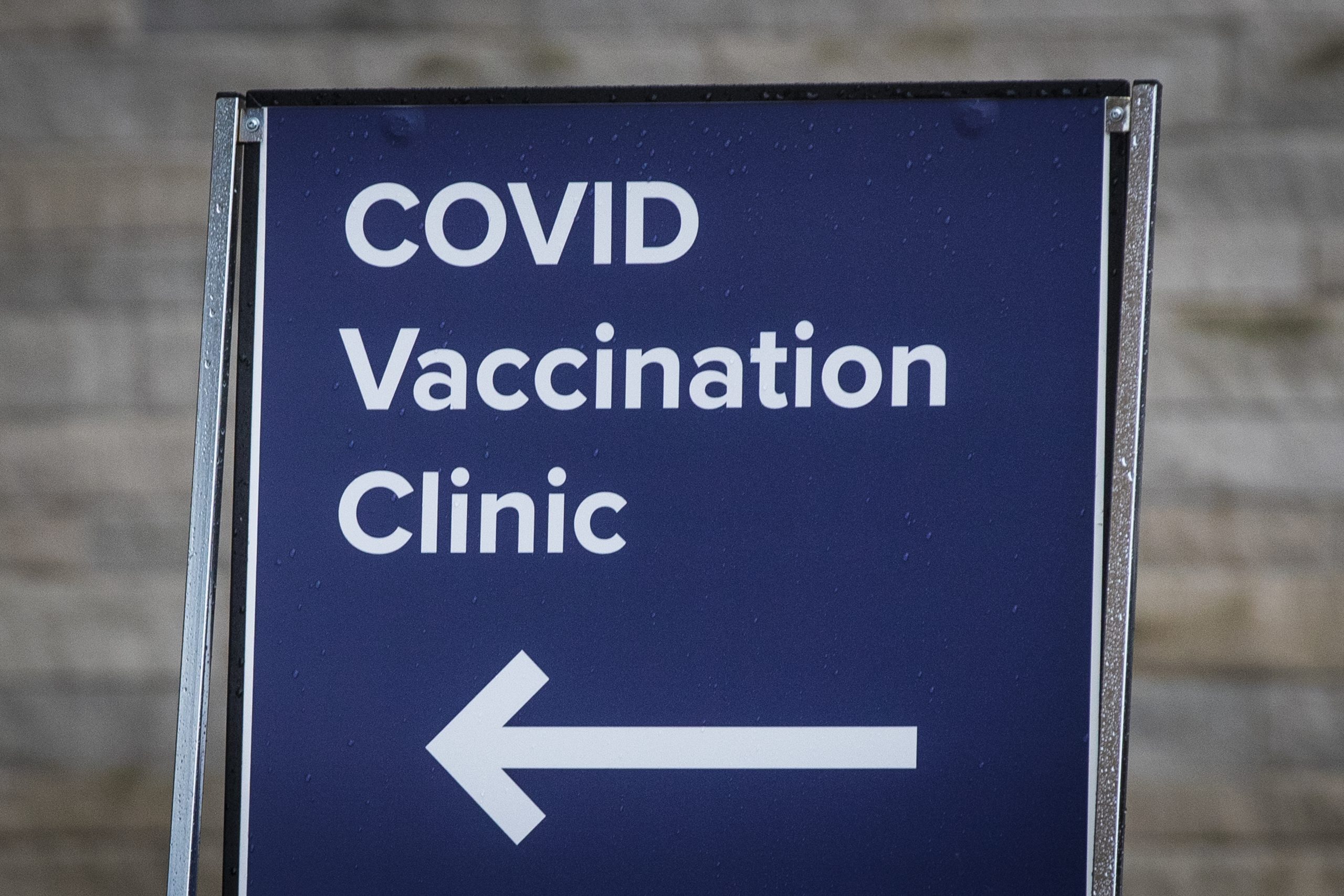
Canada soared past its one millionth diagnosis of COVID-19 on Saturday, reaching the grim milestone the same day it administered its six millionth dose of vaccine to protect against the virus.
British Columbia pushed the nation over the threshold on Saturday afternoon when it reported 2,090 infections over the course of two days, bringing the national number to roughly 1,001,650.
Canada has been recording about 100,000 new cases every three to four weeks, surging past the 900,000 mark on March 13.
The nation had also administered six million doses of vaccine as of Saturday evening, provincial data show. The federal government had set that number as the goal for how many vaccine doses should arrive in Canada by the end of the first quarter of 2021 — a target it met last week.
The two milestones are emblematic of where the nation stands with COVID-19, ramping up its vaccination drive as more contagious variants of the virus fuel the pandemic’s third wave.
Alberta, for instance, is investigating what the province’s chief medical officer of health described as a “significant” outbreak of the P. 1 variant of concern, which first emerged in Brazil.
Dr. Deena Hinshaw said in a tweet that the outbreak can be traced back to a returning traveller.
“Health officials are working hard to limit future spread and reaching out directly to those at risk of exposure,” she said. “AHS will ensure that anyone at risk is isolated, offered testing twice and connected with supports if needed.”
Hinshaw said officials will provide an update on the investigation on Monday.
That province logged an estimated 1,100 new cases of COVID-19 Saturday, roughly half of which are variants of concern.
Hinshaw said 35 per cent of the province’s active COVID-19 cases are due to those variants, which are more contagious and can cause more serious illness.
Some provinces have introduced stricter public health measures in a bid to contain the spread of such variants, with Ontario entering a “shutdown” on Saturday.
The new restrictions force gyms and personal care services across the province to close, but allow essential and non-essential retailers to remain open, with their capacities limited to 50 per cent and 25 per cent respectively.
Schools in the province will also remain open for in-person learning following the delayed spring break, which ends on April 9.
Classrooms were shuttered throughout the province after the winter break in January and gradually reopened based on the local prevalence of COVID-19. The boards in hardest-hit hot spots opened classrooms in mid-February.
But the province has said it doesn’t want to take that step again, calling it disastrous for children’s mental health.
Ontario recorded 3,009 new infections on Saturday and 3,089 a day earlier, when the government didn’t share data because of the Good Friday holiday.
Quebec, meanwhile, has seen daily cases back up over the 1,000 mark in the last few days after weeks of logging new infection rates in the triple digits, recording 1,282 cases on Saturday.
And B.C., whose high numbers tipped Canada over the edge of one million, broke its own record two days in a row, reporting 1,072 diagnoses on Saturday and 1,018 on Friday.
The province’s chief medical officer, Dr. Bonnie Henry, and Health Minister Adrian Dix said people should stay in their own community or health authority while vacationing and consider limiting their travel to day trips or overnight stays in a local campground or hotel.
“We have seen too many cases of people travelling outside their health authority region and not using their layers of protection, leading to outbreaks and clusters in their home community,” they said in a written statement.
“These outbreaks are avoidable, and right now we must stay within our local region for the safety of your community and for others.”
Saskatchewan, meanwhile, counted 280 new cases on Saturday and Manitoba reported 181 over two days.
Farther east, New Brunswick recorded nine new cases and Nova Scotia counted four.

The stars of “Schitt’s Creek” are getting recognition from their peers, taking home two Screen Actor Guild Awards on Sunday night.
The cast of the Canadian sitcom won the award for outstanding performance by an ensemble in a comedy series.
Catherine O’Hara also nabbed the award for outstanding performance by a female actor in a comedy series for her portrayal of Moira Rose.
Father-son co-creators Eugene Levy and Dan Levy were both nominated for outstanding performance by a male actor in a comedy series, but were beat out by Jason Sudeikis for his role in “Ted Lasso.”
“Schitt’s Creek” wrapped up its six-season run last year, when it swept the Emmy’s, winning all seven major comedy awards.
The show also took home best comedy series at the Golden Globes earlier this year, where O’Hara also won best actress in a comedy series.
Some of the other winners on the night included “The Trial of the Chicago 7” for Best Movie Cast Ensemble and “The Crown” for Best Television Drama Series Cast Ensemble.
The late Chadwick Boseman was honoured as the Best Actor, Movie for his role in “Ma Rainey’s Black Bottom” while co-star Viola Davis took home Best Actress, Movie.
Best Actress, TV Drama went to Gillian Anderson in “The Crown” while Jason Bateman took home Best Actor, TV Drama for his work in “Ozark”.
Anya Taylor-Joy was recognized for her role in “The Queen’s Gambit” as Best Actress, TV Limited Series while Mark Ruffalo took home the Best Actor, TV Limited Series for “I Know This Much Is True”.
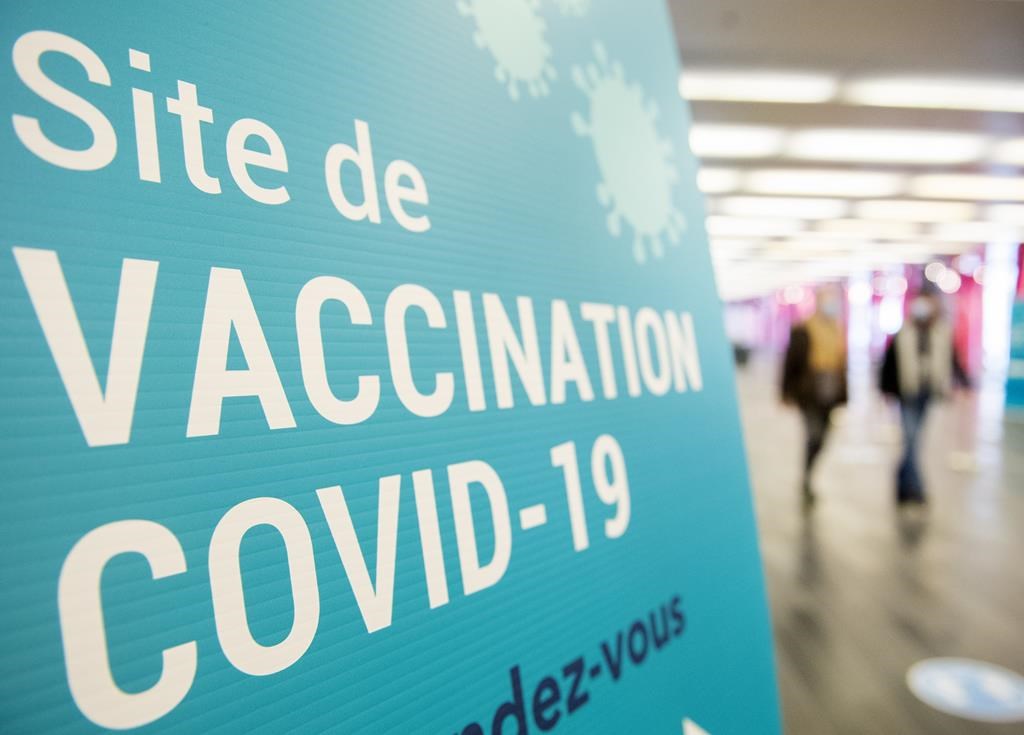
Canada’s chief public health officer urged everyone to keep their guards up amid a surge in more contagious variants of COVID-19, as the pandemic disrupted Easter celebrations for a second
Canadians need to be careful since the more contagious variants of concern “could be anywhere,” Dr. Theresa Tam wrote on Twitter.
“Let’s all be careful (and) cautious and keep up our guard,” she wrote.
Quebec, which has been struggling with a third wave of COVID-19 driven by more contagious variants, announced it would add more regions to a list of places under lockdown that already includes Quebec City and Gatineau.
The province said that parts of the Chaudiere-Appalaches region south of Quebec City would have to shutter non-essential businesses and abide by an 8 p.m. curfew as part of a series of restrictive measures set to begin Monday evening to and last until at least April 12.
Quebec reported 1,154 new cases on Sunday, as the number of cases involving presumptive variants soared past the 10,000 mark.
Ontario, meanwhile, announced that the head of its air ambulance service would be tasked with leading the province’s vaccine rollout.
Dr. Homer Tien will replace retired general Rick Hillier, who chose not to extend his contract past its March 31 expiry, the province said.
Saskatchewan reported 321 additional COVID-19 cases, with 141 of them being identified through screening as variants of concern.
New Brunswick logged 11 new cases of COVID-19 and Nova Scotia recorded seven, while several other provinces chose not to release new numbers due to the holiday.
Prime Minister Justin Trudeau acknowledged in a video message that COVID-19 has forced Canadians to celebrate Easter differently for a second straight year, and that many people are having to forego in-person church services and family dinners.
He urged Canadians to stay optimistic, suggesting that the battle with COVID-19 was drawing to a close.
“My friends, soon this crisis will end,” he said.
In the meantime, he asked people to check up on loved ones who are isolated and to find different ways to celebrate the holiday.
Several other politicians also sent out Easter messages paying tribute to front-line workers and encouraging Canadians to respect pandemic-related safety measures over the holiday.
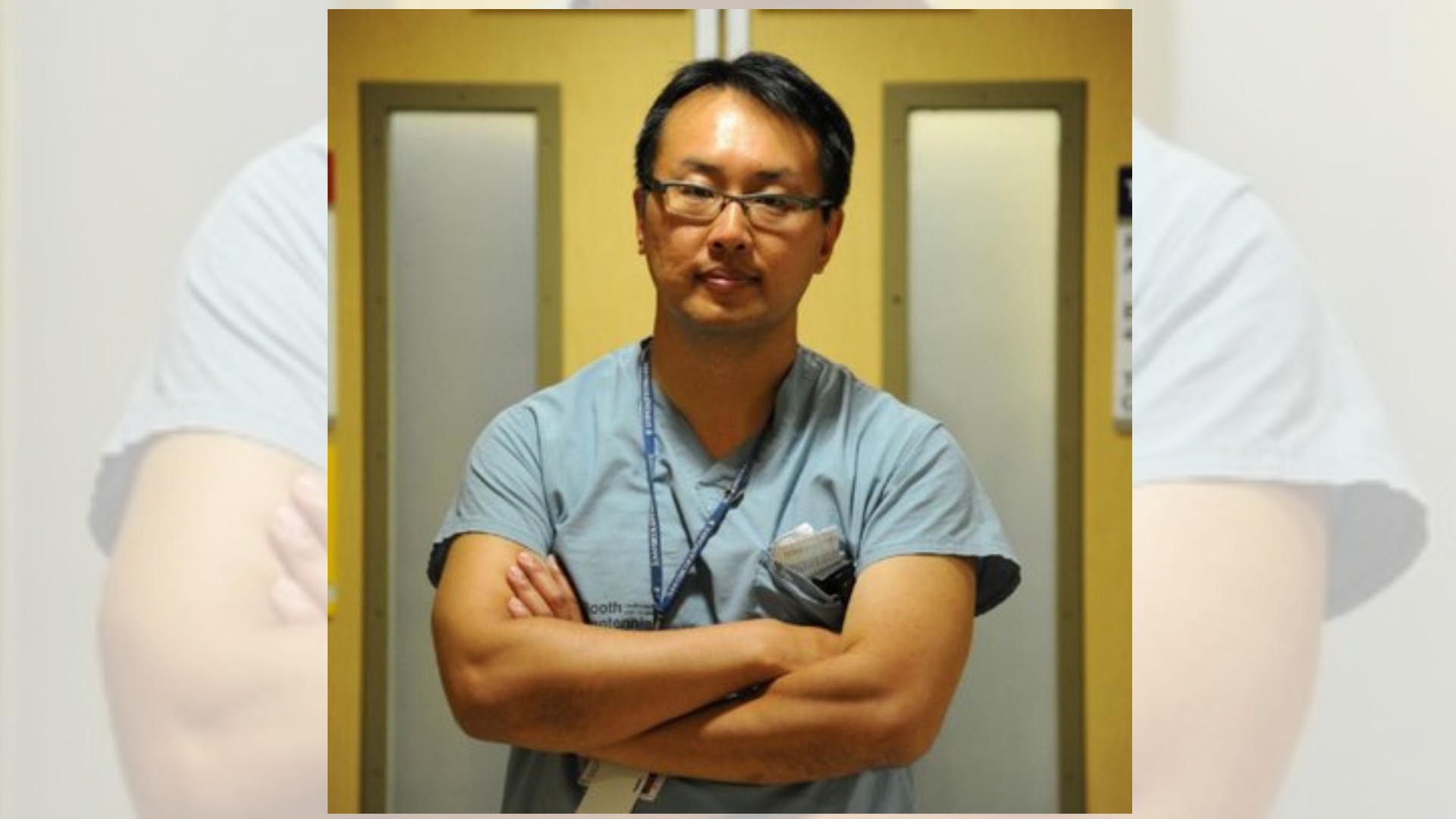
Dr. Homer Tien, CEO and president of Ornge Air Ambulance, will lead the province’s vaccine task force following the end of retired Gen. Rick Hillier’s term.
In a statement, Stephen Warner, spokesman for the Solicitor General Sylvia Jones, says the trauma surgeon will serve as the “operational lead” of the COVID-19 Vaccine Distribution Task Force as the province moves into Phase 2 of the vaccine rollout.
Dr. Tien has been a part of the task force since it was established and lead Operation Remote Immunity which delivered and administered vaccines to 31 remote First Nation communities in northern Ontario as well as Moosonee.
His term began on April 1 and will expire on Aug. 31.
Hillier’s term expired on March 31 after “overseeing the development of Ontario’s vaccine rollout plan and associated infrastructure.”
“The plan and infrastructure are now in place, and the province is administering more and more vaccines each day. We are grateful for his leadership and guidance in getting us this far,” said Warner.
He added that thus far the province has administered over two millions vaccines and if supply from the federal government is consistent, it has the capacity to administer over 150,000 a day.
Prior to joining Ornge, Dr. Tien was Medical Director for the Tory Regional Trauma Centre at Toronto’s Sunnybrook Health Sciences Centre. He has also served as a trauma surgeon and the Chief of Military Medical and Surgical Specialities with the Canadian Forces, working in combat zones like Afghanistan and the Former Yugoslavia. Dr. Tien was honoured with the Order of Military Merit, presented to members of the Canadian Forces who demonstrate dedication and devotion beyond the call of duty, and the Queen Elizabeth II Diamond Jubilee Medal.
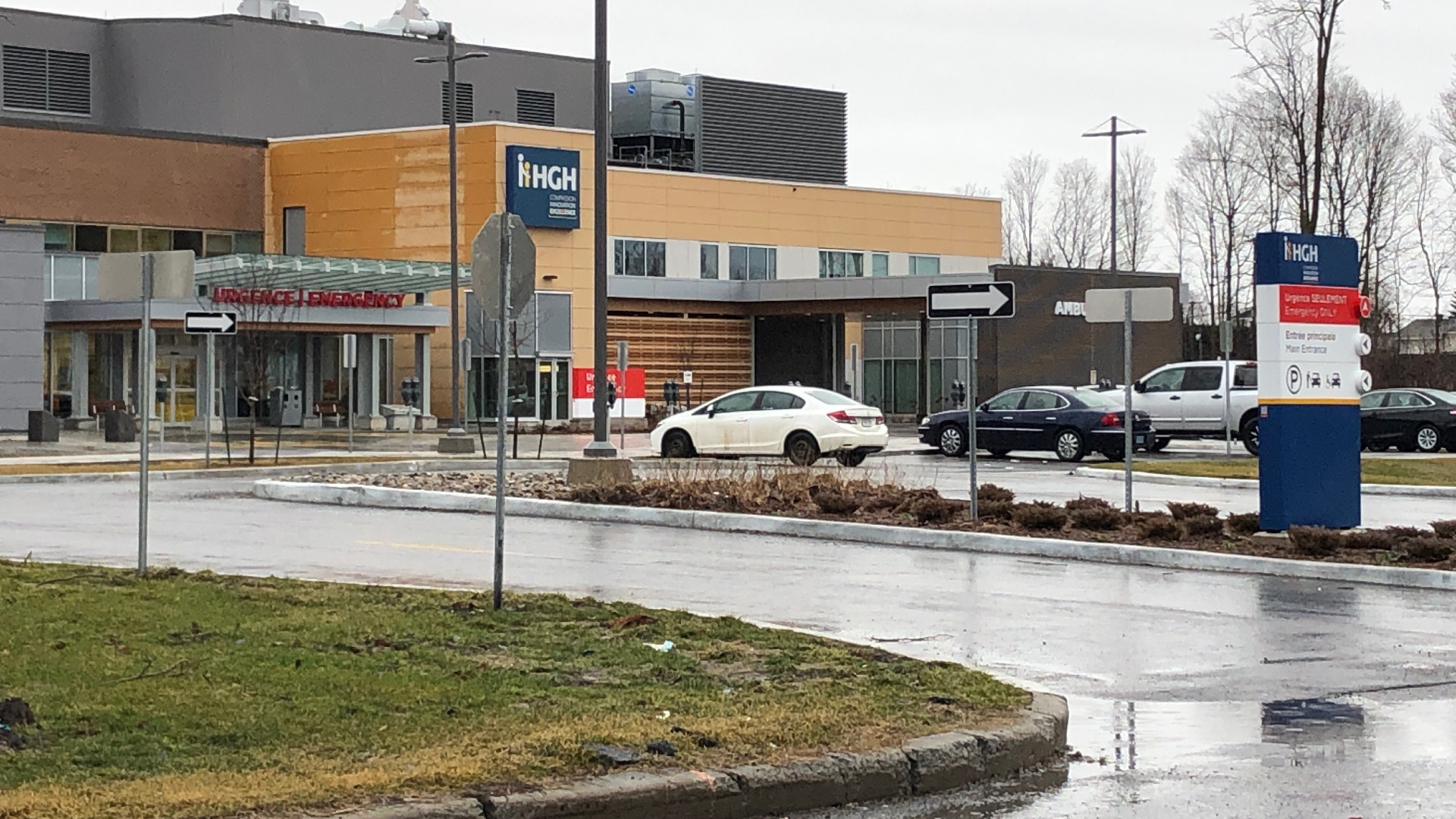
A doctor accused of murdering an 89-year-old man in an eastern Ontario hospital last week had to be supervised at work for a year until recently, The Canadian Press has learned.
The college governing doctors in the province said Dr. Brian Nadler required supervision from February 4, 2020, until February 3, 2021.
“When Dr. Nadler was issued a license to practice in Ontario in 2020, the registration committee made the decision to issue a restricted license rather than a full, independent practice license, which required that he practice under a clinical supervisor,” said Carolyn Silver, general counsel for the College of Physicians and Surgeons of Ontario.
Nadler, 35, of Dollard-des-Ormeaux, Que., is a specialist in internal medicine who worked at the Hawkesbury and District General Hospital in eastern Ontario.
Ontario Provincial Police said they were called to the hospital last Thursday. A patient, Albert Poidinger, of Point-Claire, Que., was pronounced dead after the police officers arrived. Nadler was charged Friday with one count of first-degree murder and remains in custody.
The college did not say why Nadler’s license was restricted.
“While we cannot speak to any individual circumstances, there are a number of circumstances in which the college might require a clinical supervisor,” Silver said in an email.
“Considerations would include a physician’s education and training, practice history including in other jurisdictions, and whether the physician has been in continuous practice or has not practiced for an extended period of time.”
Typically, Silver said, the restrictions would remain in place until the concerns have been addressed.
Nadler’s restrictions expired on Feb. 3 and he was free to practise medicine without a supervisor after that date.
Hawkesbury and District General Hospital declined comment.
Nadler’s lawyer, Alan Brass, did not immediately respond to a request for comment. Brass said last week Nadler maintains his innocence and will vigorously defend himself in court.
Earlier Wednesday, the college said it had suspended Nadler’s license after being notified of the allegations against him.
“We recognize that this is an extraordinarily challenging time for the community,” the college said.
The college said it is working with police and that it will take whatever steps are necessary to protect the public.
Nadler is next due in court on April 6.
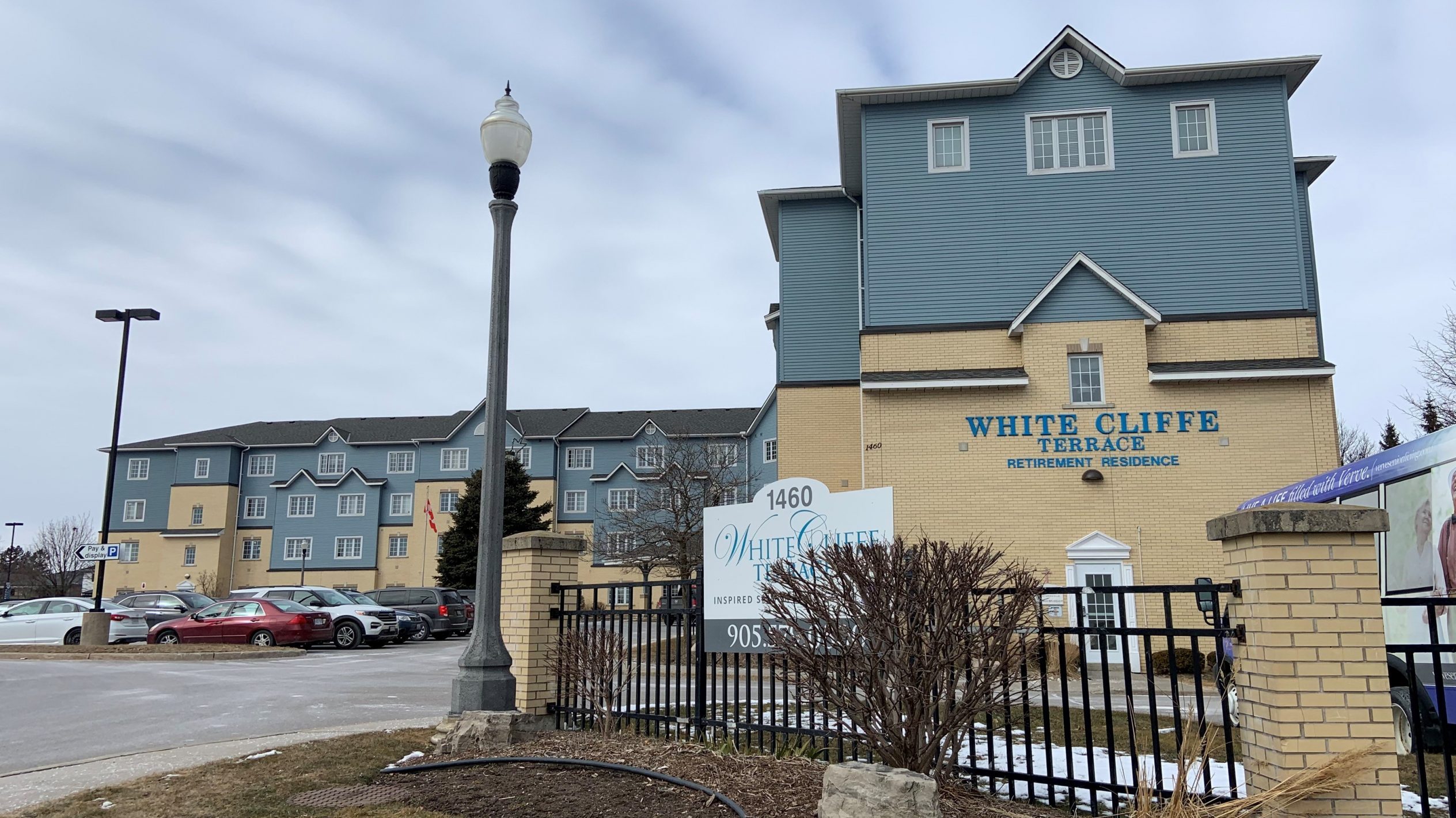
The provincial agency that governs retirement homes in Ontario has found an Oshawa-area facility failed to protect its residents from neglect and abuse by removing the door handles on rooms of COVID-19 positive residents as well as providing false or misleading information to inspectors.
A report issued by the Retirement Homes Regulatory Authority (RHRA) says White Cliffe Terrace Retirement Residence in Courtice “removed door handles to confine residents whose plans of care did not include any safety measures.”
They also found that resident charts with regards to plans of care had not been updated within the last six months.
As CityNews first reported back in February, an anonymous whistleblower came forward with information that a manager at the home ordered maintenance staff to remove door handles on some fourth-floor assisted living suites in a bid to prevent COVID-19 positive residents from freely moving around the facility.
The whistleblower alleges the handles were off the doors for several days until a head office employee discovered it and complained. He claimed they were told by management not to speak about the incident.
Staff at the home have said they received “threats” after the allegations became public.
The RHRA says it is determining next steps in the case which may include enforcement action such as “Administrative Monetary Penalties, Orders and conditions.”
“As with any licensees found in non-compliance, the RHRA will monitor this home moving forward as part of its compliance monitoring process, which will include unannounced inspections,” the RHRA said in a statement. “If ever we become aware of immediate risk of harm to residents, we will not hesitate to use the powers afforded to us under the Retirement Homes Act and will work with community partners to ensure residents are safe.”
Among the corrective measures being taken by the home are a comprehensive re-education of all staff on zero tolerance when it comes to abuse and neglect of residents, the No Restraint Policy and confinement, fire safety and the whistleblowing policy. As well, management will undergo re-education on appropriate measures to take during a COVID-19 outbreak.
Durham Regional Police are continuing the investigate the incident. No charges have been laid at this time.
Diversicare Canada, the company that manages White Cliffe, has also hired an independent firm to investigate the events and team member(s) involvement in the removal of the door handles.
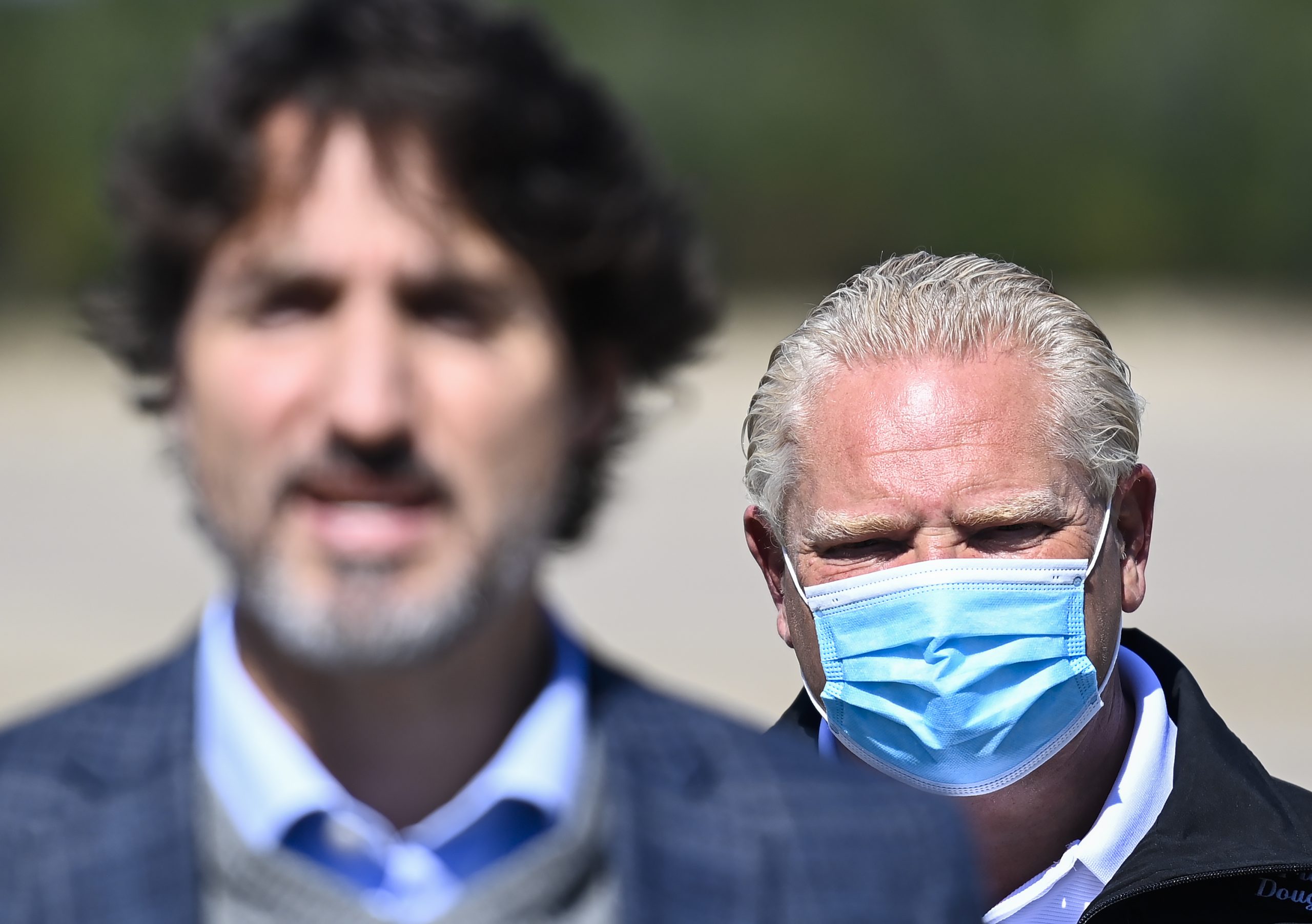
Prime Minister Justin Trudeau is pushing back against Ontario Premier Doug Ford’s accusation that the federal government’s procurement of COVID-19 vaccines is a joke.
Trudeau took a poke at Ford during a virtual Liberal fundraiser Wednesday night with Procurement Minister Anita Anand, who is in charge of securing vaccines for Canada.
He praised Anand for doing “an incredible job” that has resulted in Canada receiving millions more doses ahead of schedule.
Indeed, Trudeau said the country is on track to have “most Canadians” injected with at least one dose of a vaccine “by the end of June, so we can have a better summer.”
Until now, wary of further production interruptions like those that delayed Canada’s supply of vaccines in February, Trudeau has been unwilling to go beyond his months-old promise that all Canadians who want a vaccine will get one by the end of September.
Earlier this week, Ford blamed the federal government’s inability to secure sufficient doses on a reliable timetable for the fact that Ontario has distributed vaccines unevenly across the province. Some cities, including Ottawa, have complained they’re not getting a fair per capita share of available doses.
“We do not have enough vaccines from the federal government and it’s a joke,” Ford complained, accusing Trudeau’s government of “dropping the ball majorly.”
But Trudeau told Wednesday’s fundraiser that “one of the easiest things to do is to try and point fingers and deflect.”
While he can take criticism, Trudeau said: “I want to take a moment to defend you, Anita.”
He said he promised all premiers “many, many months ago” that Canada would get six million doses by the end of March. That promise was greeted with some skepticism, he added.
“I said, ‘No, no, Doug, you can count on that, we’re going to get them because Anita has told me we will,”’ Trudeau said.
“Well, I guess to a certain point he might have a point that we didn’t get six million doses by the end of March. We are … going to have about 9.5 million doses by the end of this week.
“We’re well beyond the six million doses we promised.”
Earlier Wednesday, at a joint federal-provincial announcement on funding for a vaccine production facility in Toronto, Ford declined to expand on his criticism of COVID-19 vaccine procurement.
“Are we going to have as a big family a few differences? Sure we are,” he said, preferring to concentrate on how collaboratively all three levels of government have been working since the pandemic hit Canada more than a year ago.
By Wednesday evening, however, Ford was tweeting that Ontario received 809,000 fewer vaccine doses in March than it had been promised.
“That’s 809,000 Ontarians who could have received a shot but didn’t. We need more vaccines!”

Ontario is poised to enter a month-long lockdown to try and curb the rise in COVID-19 cases across the province, several sources tells 680 NEWS.
WATCH: https://toronto.citynews.ca/2021/03/31/ontario-poised-to-enter-month-long-lockdown-sources/
Every region of the province will be placed in the Grey-Lockdown zone starting 12:01 a.m. Saturday morning.
Exact details of the lockdown measures are expected to be confirmed on Thursday by Premier Doug Ford.
Six regions are already in Grey-Lockdown, including Toronto, Peel and Hamilton, while another 16 areas are in the Red-Control zone when it comes to provincial restrictions.
Patios, which just reopened in Toronto and Peel Region, will have to close while restaurants and bars can still remain open for takeout and delivery.
Nonessential retail will be allowed to remain open with a 25 per cent capacity limit as is currently permitted in the grey zones.
Some outdoor activities will be allowed such as golf, but team sports will not be allowed.
As well, hair and nail salons along with barbershops that were scheduled to reopen on April 12 under modified Grey-Zone restrictions will now remain closed.
Sources tell 680 NEWS that schools will remain open next week as they prepare to head into the delayed spring break, scheduled to begin April 12. It’s uncertain if students will return to the class following the week-long break.
The province started to reopen its economy earlier this month but implemented an “emergency brake” measure that would allow it to move regions into lockdown if cases spike.
For the seventh day in a row, Ontario reported more than 2,000 new cases of COVID-19 on Wednesday, while the number of patients in intensive care units (ICU) reached the highest number since the pandemic began last year.
Critical Care Services Ontario, which tracks hospitalizations in the province, stated that 421 patients are currently in the ICU with a COVID-19-related critical illness.
In its daily update, the province said 1,111 people are currently being treated in hospital overall.
The latest report from the province’s COVID-19 Science Advisory Table showed that variants of concern (VOC) have sent more Ontarians to the ICU, and that people infected with the variants were more likely to be hospitalized and die.
The advisory group also said in its report that as of March 28, variants comprised 67 per cent of all infections, and the B.1.1.7 variant that was first detected in the United Kingdom made up 90 per cent of variant cases.

A 23-year-old woman Peel police allege had been kidnapped from a Brampton residence over the weekend has been found.
WATCH: A 23-year-old woman Peel police allege had been kidnapped from a Brampton residence over the weekend has been found.
Police said the woman walked into a Brampton police station by herself at around 7:30 p.m. Monday.
“She is safe and our investigation is still ongoing,” police said.
Police said the woman was seen by paramedics and transported to the hospital for a condition not related to the incident.
The man police allege is connected to the incident, 21-year-old Kwami Garwood has not yet been located, police said.
Investigators said the incident began just before 3:00 a.m. Sunday when they received numerous calls about a man “screaming and banging on doors” outside a Brampton residence.
According to the Special Investigations Unit (SIU), police entered the home and made their way to the garage area where they discovered a man in the driver’s seat of a car with a woman in the back seat.
The suspect fled the area in a vehicle with the woman inside, who investigators alleged was being held against her will by Garwood.
On Sunday, police recovered a black Honda Civic but said the suspect and victim remain at large.
In an update on Monday morning, investigators said both the victim and the suspect travelled in a taxi to the area of Ruddington Drive and Bayview Avenue in Toronto at approximately 4:00 a.m.
Shortly afterward, a red or orange Kia Soul was observed entering a parking lot at 3230 Bayview Avenue in Toronto, which is also in the area of Ruddington Drive and Bayview Avenue.
The vehicle may or may not be involved but investigators say they’re hoping to speak with the driver.
Police said Garwood is known to them and wanted on four outstanding warrants throughout the GTA, including a first-degree murder warrant in July 2020.
The victim is not known to police.
Garwood is believed to be armed and dangerous and police are asking anyone that sees him or the victim to contact 9-1-1 immediately.









